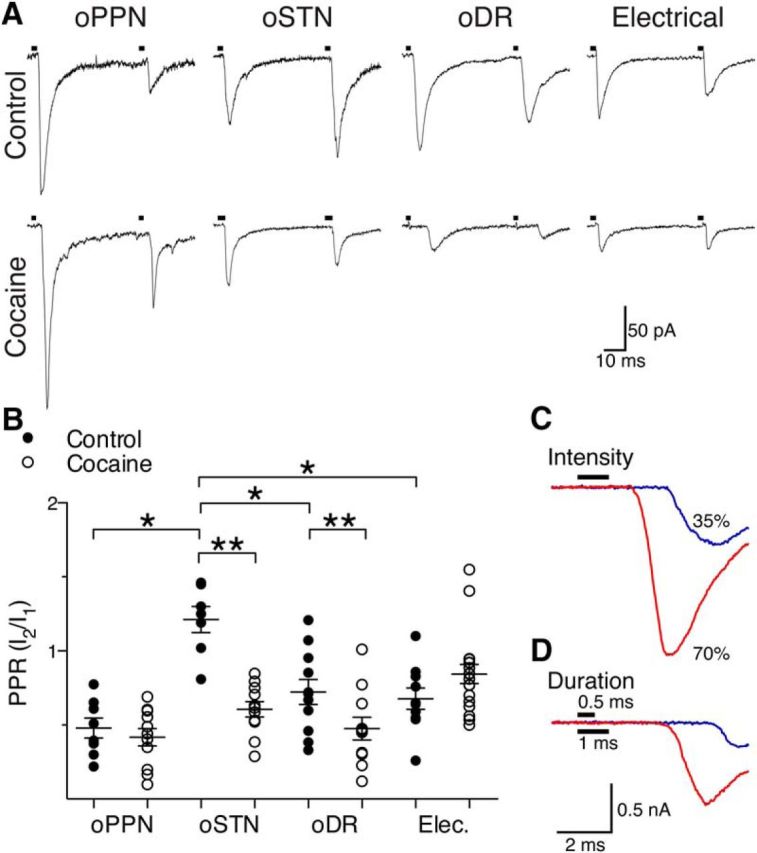Figure 6.

Cocaine increases the probability of release at STN and DR synapses but does not affect PPN synapses. A, oPPN-evoked and oDR-evoked EPSCs demonstrate paired-pulse depression. oSTN-evoked EPSCs show paired-pulse facilitation whereas electrical stimulation (artifact-blanked) evoked EPSCs with paired-pulse depression. Exposure to cocaine leads to paired-pulse depression from facilitation of oSTN-evoked EPSCs, increased paired-pulse depression of oDR-evoked EPSCs, and no change in oPPN-evoked or electrically evoked EPSCs. B, oSTN-evoked EPSCs have a PPR that is significantly higher than electrically evoked or oPPN-evoked EPSCs. The PPR of oDR-evoked and oSTN-evoked EPSCs is significantly reduced by in vivo cocaine exposure, while PPRs of electrically evoked and oPPN-evoked EPSCs remain unchanged. C, D, An example of oPPN-evoked EPSCs in which amplitude increased and onset latency decreased as the light intensity (C) or pulse duration (D) was increased, indicating the EPSCs were elicited by propagating action potentials. *p < 0.05, **p < 0.01.
